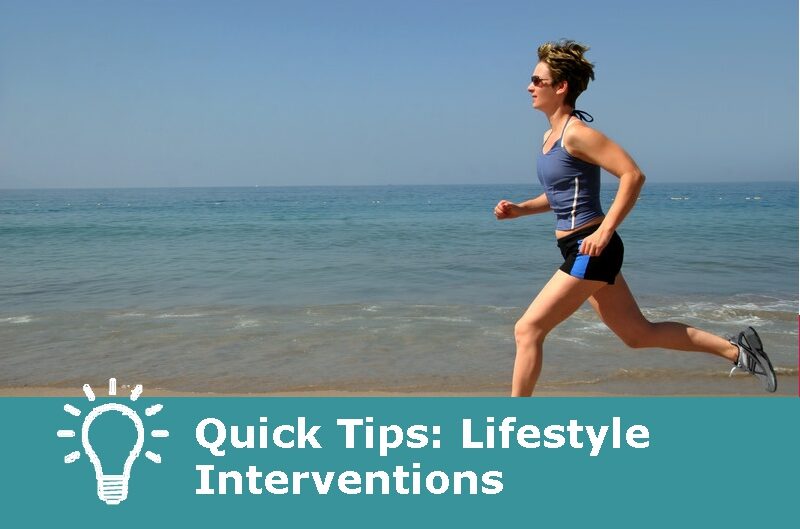Treatment resistant depression (TRD) is not untreatable. The challenge is to keep hope alive and the patient engaged in their recovery, writes Editor-in-chief Chris Aiken in the July/August issue of The Carlat Psychiatry Report. In addition to using antidepressants as part of treatment, Dr. Aiken says you should recommend the following patient lifestyle changes:
1. Brisk walking
Tell patients, “I don’t want you to exercise—that’s too difficult—just start walking briskly.” Fortunately, the type of exercise with the best evidence in depression is relatively mild: less than a jog but more than a walk. The ideal dose is 30 minutes a day or 45 minutes every other day.
2. A slow forest walk
If a brisk walk is too intimidating, a stroll in the woods may provide similar relief. In one study, a 90-minute forest walk reduced ruminative thinking more than a similar urban walk. It also lowered neural activity in an area of the brain involved in behavioral avoidance (the subgenual prefrontal cortex) (Bratman GN et al, Proc Natl Acad Sci, 2015;112(28):8567-8572).
3. Regular wake times
Cognitive behavioral therapy for insomnia (CBT-i) is a first-line treatment for insomnia, and about a dozen clinical studies have found it effective for depression as well (Cunningham JE et al, J Psychosom Res 2018;106:1-12).
4. Dawn simulator
Ask a depressed patient how long it takes them to feel fully awake and they may answer in terms of hours rather than minutes. That’s due to a little-known symptom of depression called sleep inertia, and it improves with a dawn simulator. These devices create a virtual sunrise in the bedroom, and they worked for winter depression in six small controlled trials (Danilenko KV et al, J Affect Disord 2015;180:87-89).
5. Mediterranean diet
In 2017, following two controlled trials from Australia (Parletta N et al, Nutr Neurosci, 2017:1-14), we saw the first clinical evidence that dietary change can improve depression.
6. Mindfulness or breathing meditation
Along with brisk walking, these two interventions work not only in depression, but in treatment resistant populations as well (Sharma A et al, J Clin Psych, 2017;78:e59-e63). Granted, they are more likely to work if undertaken with a therapist or instructor, but patients who are unable to do that may find some benefit through regular independent practice.
Want to read the full article? Click here. (Full article is available to The Carlat Psychiatry Report subscribers. Not a subscriber? Join here.)
1. Brisk walking
Tell patients, “I don’t want you to exercise—that’s too difficult—just start walking briskly.” Fortunately, the type of exercise with the best evidence in depression is relatively mild: less than a jog but more than a walk. The ideal dose is 30 minutes a day or 45 minutes every other day.
2. A slow forest walk
If a brisk walk is too intimidating, a stroll in the woods may provide similar relief. In one study, a 90-minute forest walk reduced ruminative thinking more than a similar urban walk. It also lowered neural activity in an area of the brain involved in behavioral avoidance (the subgenual prefrontal cortex) (Bratman GN et al, Proc Natl Acad Sci, 2015;112(28):8567-8572).
3. Regular wake times
Cognitive behavioral therapy for insomnia (CBT-i) is a first-line treatment for insomnia, and about a dozen clinical studies have found it effective for depression as well (Cunningham JE et al, J Psychosom Res 2018;106:1-12).
4. Dawn simulator
Ask a depressed patient how long it takes them to feel fully awake and they may answer in terms of hours rather than minutes. That’s due to a little-known symptom of depression called sleep inertia, and it improves with a dawn simulator. These devices create a virtual sunrise in the bedroom, and they worked for winter depression in six small controlled trials (Danilenko KV et al, J Affect Disord 2015;180:87-89).
5. Mediterranean diet
In 2017, following two controlled trials from Australia (Parletta N et al, Nutr Neurosci, 2017:1-14), we saw the first clinical evidence that dietary change can improve depression.
6. Mindfulness or breathing meditation
Along with brisk walking, these two interventions work not only in depression, but in treatment resistant populations as well (Sharma A et al, J Clin Psych, 2017;78:e59-e63). Granted, they are more likely to work if undertaken with a therapist or instructor, but patients who are unable to do that may find some benefit through regular independent practice.
Want to read the full article? Click here. (Full article is available to The Carlat Psychiatry Report subscribers. Not a subscriber? Join here.)


_-The-Breakthrough-Antipsychotic-That-Could-Change-Everything.jpg?1729528747)



